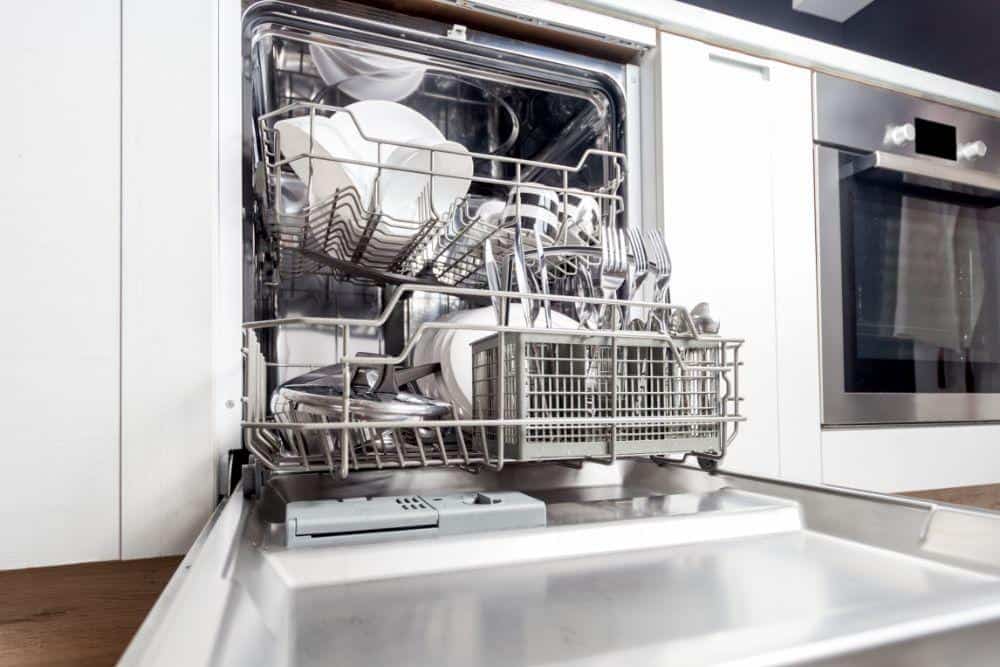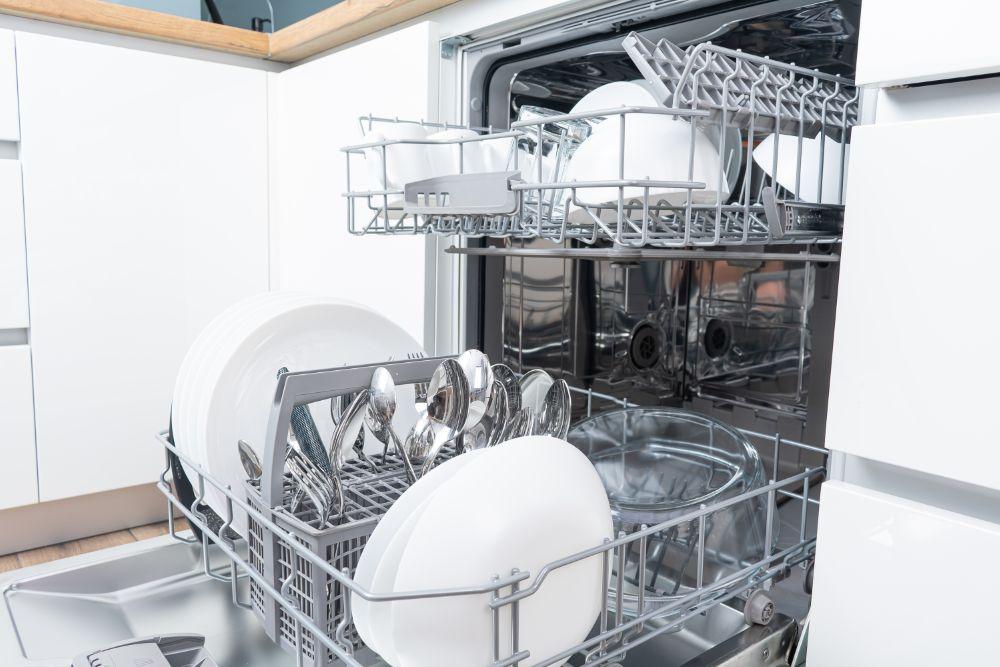Items that are dishwasher safe get treated during manufacturing to survive the high temperatures and pressures of a dishwasher. While many manufacturers make dishes with dishwashers in mind, this isn’t always the case. Follow the manufacturer's guidelines and check for restrictions before washing any item you are unsure about in the dishwasher.
Most dishwasher safe items will either say ‘dishwasher safe’ or have a dishwasher-safe symbol. A dishwasher safe symbol usually looks like a utensil or dish in a box without a cross. If the items in the box have small lines or water droplets only on the top of the symbol, that means that the dish is top-rack dishwasher safe only.
In general, the following items are usually dishwasher safe:
Simple Steps That Can Be Followed to Check if an Item is Safe for The Dishwasher
There are exceptions to these rules, however. Knives cannot go in the dishwasher, regardless of the material. You should also keep an eye on older items, such as those you’ve inherited, as they may have been crafted before more modern technologies strengthened dishes.
The following items are never dishwasher safe:
You should not assume that a plastic container or item is dishwasher safe unless it explicitly says so or has the dishwasher safe symbol. Even if you see a dishwasher-safe symbol on your plastic item, you should only wash it on the top rack of your dishwasher, never the bottom rack. Many guidelines help you determine whether a plastic item is dishwasher safe.
Generally, plastic dishes that are recycle-category 2, 4, or 5 are top-rack dishwasher safe. All other recycle-category plastics will likely melt or warp in your dishwasher, so they should be hand-washed instead.

Some Plastic Can be Washed in the Dishwasher
The heating element of a dishwasher is at the bottom, so the bottom rack of your dishwasher will endure much higher temperatures. The hottest water in your dishwasher will be at the bottom, so keep items with low melting points like plastics on the upper rack to prevent warping.
While many items are crafted with dishwashers in mind, many items cannot safely go in the dishwasher. Knives can be dulled or disintegrated in the dishwasher, making them dull. Painted glass and ceramics, especially handpainted designs, often lose their paint when washed with harsh dishwasher detergent.
Wood items like cutting boards and spoons should be hand-washed and dried quickly. Wood is porous and can absorb water and expand if left in hot water for too long or at high pressures. The absorption increases the porosity of the wood, leaving room for more water and breaking down the object's integrity.
Aluminum cannot go in the dishwasher because it will dull and darken. The dishwasher detergent gives the water a higher pH, making it more alkaline or basic. The high pH of the water can cause aluminum to corrode or pit, running your baking sheets and other aluminum utensils.
Copper dishes, namely Moscow mule mugs, cannot go in the dishwasher either. Copper will fade and turn dull if run through the dishwasher, ruining one of the main appeals of the cup.
The detergent and high pressure of the dishwasher will cause the non-stick coating on your pans to break down and eventually flake off. To ensure that your non-stick pans have the longest life possible, hand-wash them with a gentle sponge.
While most non-stick pans cannot go in the dishwasher, Teflon pans can. Teflon has a guarantee that their non-stick coating will last the life of the pan, whether you use a dishwasher or not.
There are two sets of spray arms in a dishwasher, one under the bottom rack and one in between the two racks. The two sets of spray arms ensure that every part of the dishwasher has access to warm, soapy water, but in general, the top rack gets less heat and pressure than the bottom.

Different Dishes Can Go on the Top or Bottom Rack of Your Dishwasher
Most items that are microwave-safe are also top-rack dishwasher safe, though not all. Additionally, while you may be able to microwave some disposable items to reheat food, disposable items like plastic utensils or cups should be hand-washed if you want to keep them.
Once you have determined which dishes are dishwasher safe, you will want to ensure that you get the best clean possible. Take care of your dishwasher and load it correctly to ensure that your dishes come out top-notch every time.
First, you should ensure that every item you place in the dishwasher is dishwasher safe. Then, you should place large, sturdier items on the bottom rack. Large items include things like plates, bowls, and stainless steel cookware.
You should load the top rack with smaller, more fragile items like cups, small bowls, and mugs. These smaller items are likely more delicate, so the top rack's lower pressure and cooler temperature will mitigate the risk of damage. All plastics should go on the top shelf, preventing warping and leeching of your plastics.

This Dishwasher Leaves Plenty Of Space For Dishes to Be Washed
Try to leave space in between dishes when loading. The gaps will help prevent damage or breakage and ensure soapy water can get around each dish. All silverware should be placed with the handle facing downwards to maximize the amount of water hitting the dirtiest part, except for knives, which should have their handles facing up for safety when unloading.
Any items with labels that you may want to wash, such as new dishware or a jam jar that you want to keep, should have their labels removed before being run through the dishwasher. Labels will often fall off during the dishwasher cycle, and the paper will get caught in the filter.
You should clean your dishwasher monthly. To keep it in the best shape possible, you should clean the filter, spray arms, doors, and seals. The filter is on the bottom of your dishwasher, underneath the bottom rack. Pull the rack out, remove the filter, and hand wash it in your sink. Do not run the dishwasher without the filter installed.
To clean the spray arms, wipe them with a warm, wet towel. Every six months, remove the spray arms and clean the spray holes to remove any mineral buildup. Wipe the doors and seals using a damp paper towel or cleaning wipe.
To keep your dishwasher in the best shape, you should run it weekly. Frequent use will keep the motors and wheels in the best condition possible.
You should always scrape off the large chunks of food left on dishes, but there is no need to rinse off dishes thoroughly before putting them in the dishwasher. Most detergents are designed to bind to the food leftovers and will be more effective if there is some debris left on the dishes.
Running your dishwasher frequently may also help maximize the effectiveness of your dishwasher. Dishwashers are much more efficient than they used to be and are far more efficient than hand-washing, so feel free to run your dishwasher without a full load.
